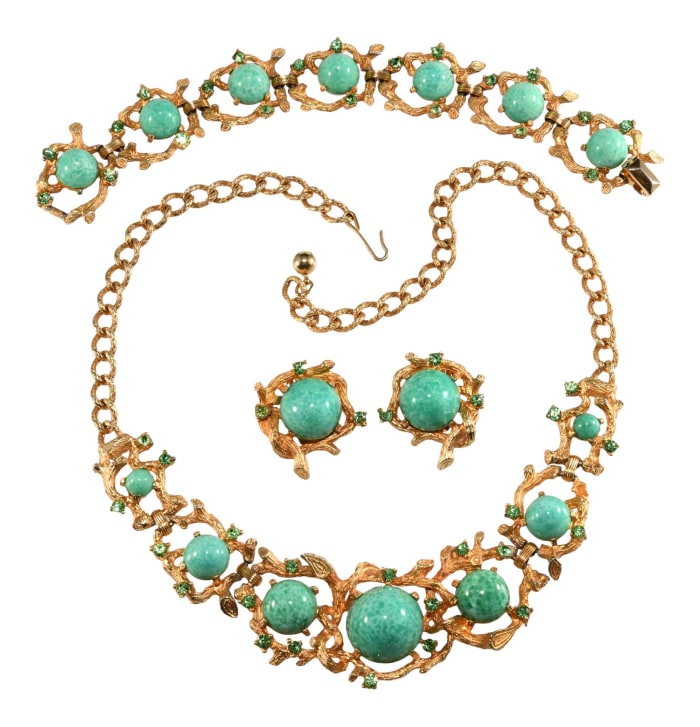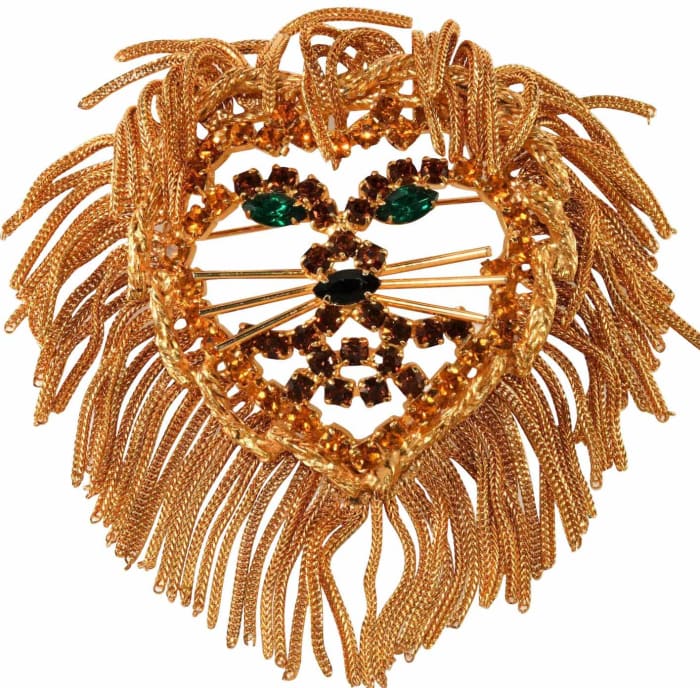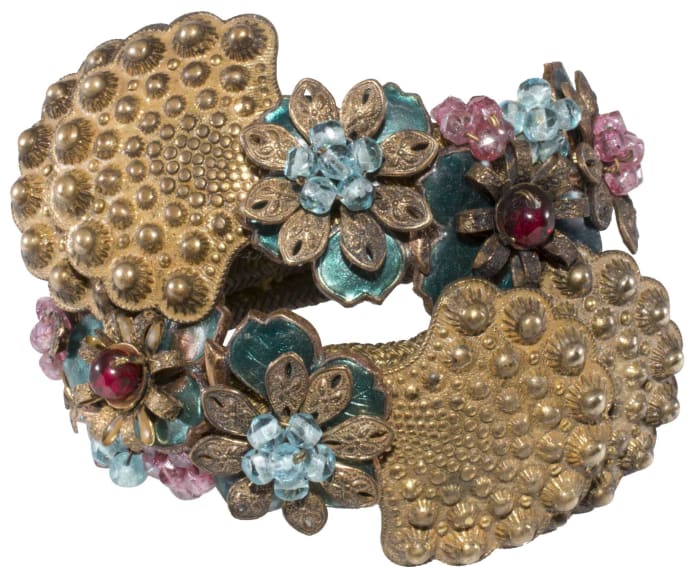A rose is a rose, right? If you don’t know who designed or manufactured a piece of jewelry, it’s still just as pretty. Nevertheless, you’ll do yourself a big favor by learning how to identify as many unmarked pieces as you can. Fleshing out this idea can be as easy as answering a few of the most common questions about unmarked costume jewelry.
Why is identifying unmarked jewelry important?
Savvy shoppers learn to look for unmarked pieces at bargain prices. In the antiques biz, these are often called “sleepers.” That is one of the really fun aspects of knowing what’s what in this vein, but there are some other important things to think about as well.
No matter where you’re shopping for vintage, there’s always the possibility for mistakes in attribution. Being able to pick out misattributed pieces, whether the seller is making an honest mistake or intentionally elevating the status of an item, will help you make sure you’re getting your money’s worth.
For most jewelry buyers and sellers, identifying a piece of unmarked jewelry also gives them a leg up on further research. Without knowing who designed a piece or which company manufactured it, it is more challenging to correctly value costume jewelry whether you’re deciding how to safeguard it as part of a collection or how to price it for resale.
And speaking of selling, especially online, identifying an unmarked piece gives you an edge with all-important keywords so buyers can find what you’re marketing. You also don’t want to undervalue your pieces, and that happens quite frequently when sellers don’t do their homework. Of course, folks who want a quick flip on their flea market finds might not really care. But why sell something for $25 when you can get $125 for it?
How do you learn to identify unmarked jewelry?
Honestly, this comes with experience. There’s also more to it than what can be shared in an introductory article like this one. Regardless, keeping some important points in mind as you move forward will be very helpful.
Back in the day, manufacturing businesses known as “jobbers” took orders from jewelry distributors and made pieces with the buyer’s mark either molded into or affixed to the piece. Thusly, you might find the same unmarked vintage pieces attributed to several different manufacturers. For instance, some of the same brooch designs produced for Kenneth Jay Lane were also made for Hattie Carnegie. The jobbers made unmarked versions of those same designs as well.
Beyond the confusing pieces made for a number of different companies, there are some manufacturers of costume jewelry that used the same types of construction techniques, components and/or stones over and over. Once you get familiar with those, a good bit of the unmarked battle is won.
For instance, you may have heard the name “Juliana” kicked around in the costume jewelry realm. Basically, this is a collector’s nickname for jewelry made by a manufacturer called DeLizza & Elster. Most pieces were sold only with paper hang tags, so the actual jewelry was left unmarked when those were removed. When you learn what to look for, however, you’ll be able to identify many different styles made by this popular company.
Keep in mind that other familiar names like Schreiner, Miriam Haskell and Selro all marketed unsigned pieces. In the instance of Selro, the majority of the jewelry they made was unmarked. Once you get a feel for the chunky metalwork and the distinctive “face” stones used in a number of their designs, identifying them gets much easier. Another example is early jewelry made by Miriam Haskell. This company didn’t mark any of their jewelry until the late 1940s, so during the World War II era they crafted pieces with non-traditional components such as shells or wooden beads and some of them had the elements sewn onto plastic backings.
You can view several examples of unsigned jewelry made by these companies in Warman’s Costume Jewelry (Krause Publications), but others go into even more detail. Titles like Miriam Haskell Jewelry by Cathy Gordon and Sheila Pamfiloff (Schiffer) and Schreiner: Master of 20 Century Costume Jewelry by Carole Tanenbaum and Eve Townsend (Glitterati) are worth the cost for the information they impart on identifying unmarked pieces alone.
You’ll also find some useful sites online for identifying both Selro and DeLizza & Elster designs. Two that collectors use frequently are “The Many Faces of Selro” and the “Is it Juliana Jewelry?”
Will I Be Able to Attribute Every Piece of Unmarked Jewelry?
Even though lots of unsigned pieces of vintage jewelry are tremendously pretty, there are going to be times when you quickly hit a dead end with your research. Many are just too indistinct to attribute them to one manufacturer or designer successfully.
Companies like Weiss and Kramer, along with a number of others, purchased jewelry from a variety of jobbers so they have many different looks associated with their lines. It’s very hard to categorize these more generic pieces collectors’ reference as “unsigned beauties.” That’s okay, because they’re lovely and they can still hold some value.
Think about what else you can learn from a piece of unmarked costume jewelry before giving up though. Other details like the type of clasp or closure, distinctive construction techniques, metals used, and the stone embellishments can provide clues that help in determining the date jewelry was made and the potential origin.
For example, a trombone clasp on a brooch can indicate it was made Europe and very possibly France. Pot metal, a type of silver-colored metal without plating, often points to a piece being produced in the 1930s. And, iridescent “Aurora Borealis” rhinestones indicate a manufacturing date after 1955 since that’s the year Swarovski introduced them.
These are just a few things to look for and as you gain experience, you’ll learn many more. Remember that every piece of jewelry holds a story, and you’ll never look at unmarked beauties the same way again.












